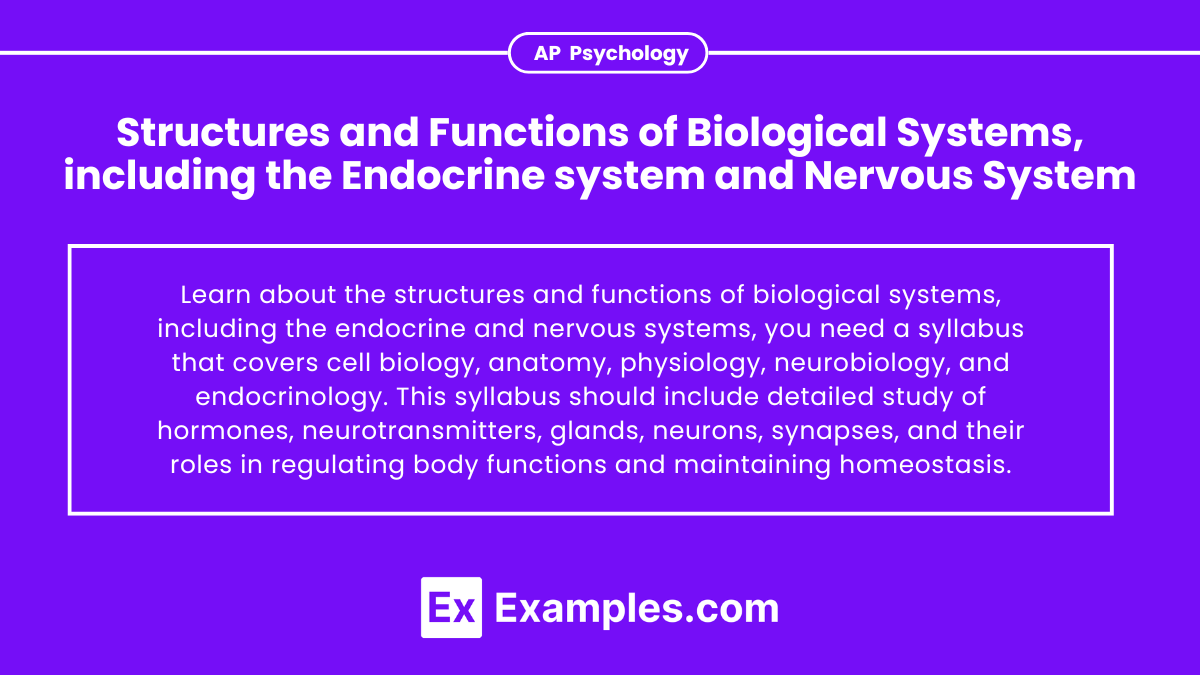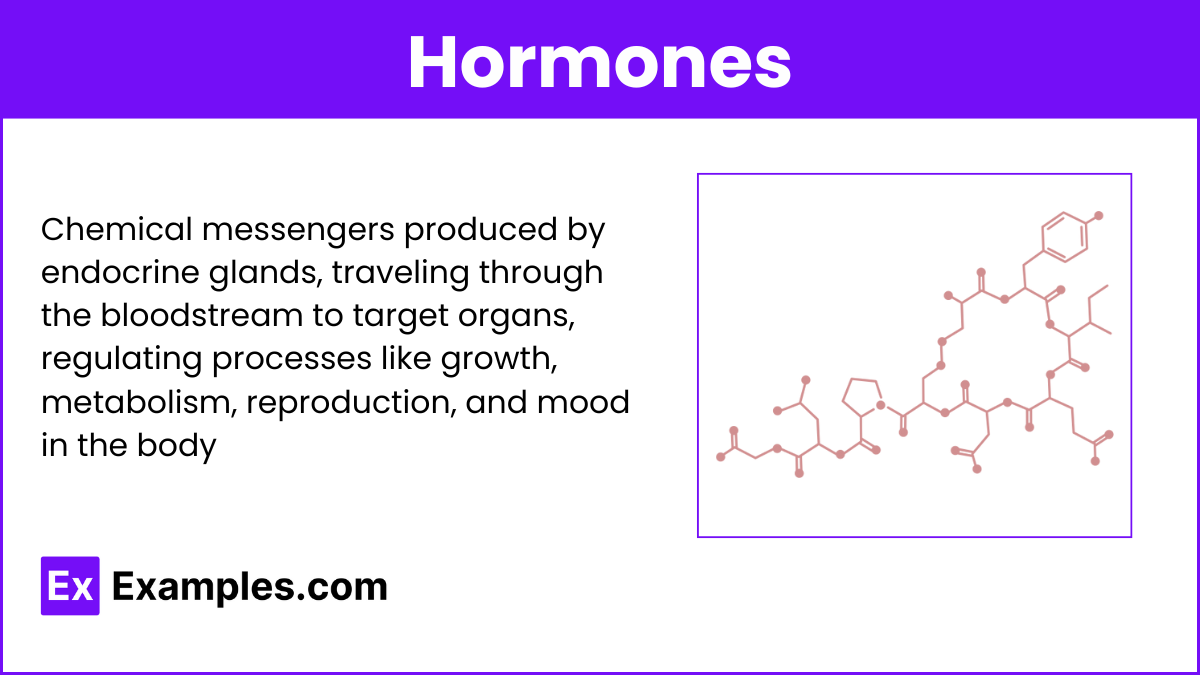The structures and functions of biological systems, particularly the nervous and endocrine systems, are crucial for understanding human behavior. In AP Psychology, you'll explore the brain, spinal cord, neurons, and neurotransmitters in the nervous system, and glands like the thyroid and adrenal in the endocrine system. These systems interact to regulate processes such as growth, metabolism, and stress response, providing a foundation for comprehending how biological mechanisms underpin psychological phenomena.
Learning Objectives
understand the structures and functions of the nervous and endocrine systems. Learn key components like the brain, spinal cord, neurons, and neurotransmitters. Know the major endocrine glands and their hormones. Grasp how these systems interact, including feedback loops and the hypothalamic-pituitary axis, to influence behavior and mental processes.
The Endocrine System
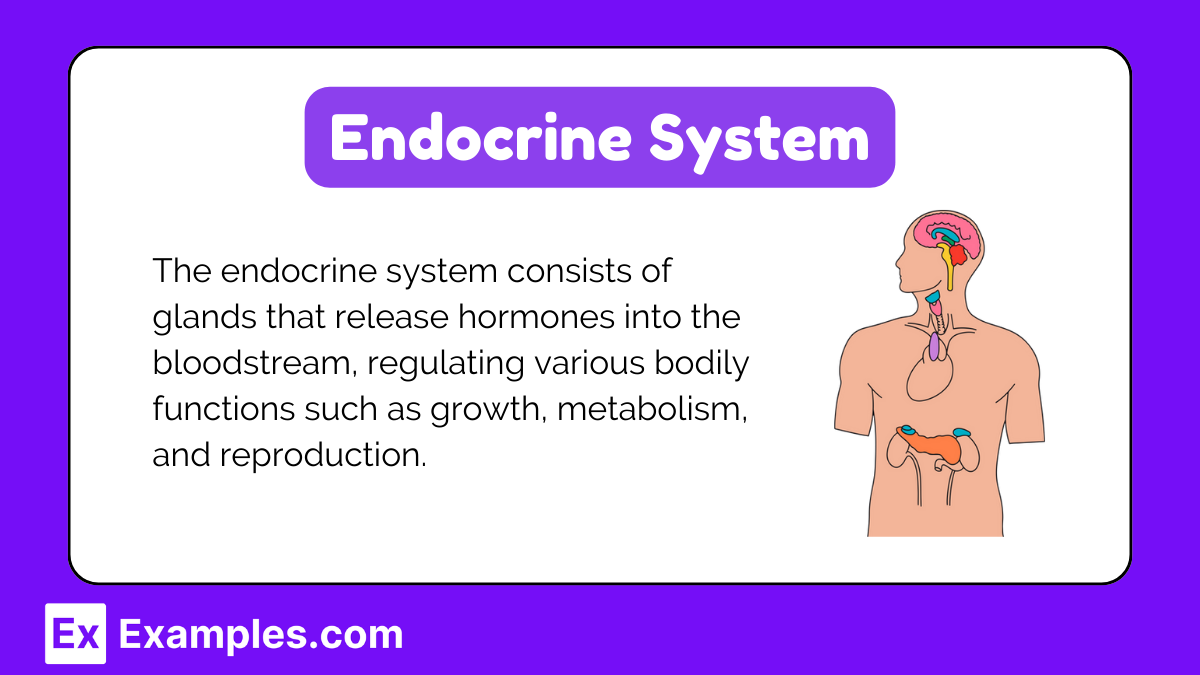
The endocrine system is a network of glands that produce and release hormones, regulating various body functions such as metabolism, growth, and reproduction. Key glands include the pituitary, thyroid, adrenals, and pancreas. This system maintains homeostasis and coordinates the body's responses to internal and external changes, ensuring overall health and balance.
Endocrine Glands
1. Hypothalamus
Location: Brain, below the thalamus.
Function: Links the nervous system to the endocrine system via the pituitary gland. Regulates body temperature, hunger, thirst, and circadian rhythms.
Hormones:
Releasing and Inhibiting Hormones: Control the release of hormones from the pituitary gland.
2. Pituitary Gland
Location: Base of the brain, under the hypothalamus.
Function: Often called the "master gland" because it controls other endocrine glands.
Hormones:
Anterior Pituitary:
Growth Hormone (GH): Stimulates growth and cell reproduction.
Thyroid-Stimulating Hormone (TSH): Stimulates thyroid hormone production.
Adrenocorticotropic Hormone (ACTH): Stimulates cortisol release from the adrenal glands.
Follicle-Stimulating Hormone (FSH) and Luteinizing Hormone (LH): Regulate reproductive processes.
Prolactin (PRL): Stimulates milk production.
Posterior Pituitary:
Oxytocin: Stimulates uterine contractions and milk ejection.
Vasopressin (ADH): Regulates water balance in the body.
3. Thyroid Gland
Location: Neck, below the larynx.
Function: Regulates metabolism, growth, and development.
Hormones:
Thyroxine (T4) and Triiodothyronine (T3): Increase metabolic rate and protein synthesis.
Calcitonin: Lowers blood calcium levels.
4. Parathyroid Glands
Location: On the posterior surface of the thyroid gland.
Function: Regulate calcium levels in the blood and bones.
Hormones:
Parathyroid Hormone (PTH): Increases blood calcium levels by stimulating bone resorption, increasing calcium absorption in the intestines, and reducing calcium excretion by the kidneys.
5. Adrenal Glands
Location: On top of each kidney.
Function: Produce hormones that help regulate metabolism, immune response, and stress.
Hormones:
Adrenal Cortex:
Cortisol: Regulates metabolism and the stress response.
Aldosterone: Regulates sodium and potassium balance.
Androgens: Contribute to sex drive and other functions.
Adrenal Medulla:
Epinephrine (Adrenaline) and Norepinephrine (Noradrenaline): Increase heart rate, blood pressure, and blood glucose levels in response to stress.
6. Pancreas
Location: Behind the stomach.
Function: Regulates blood glucose levels.
Hormones:
Insulin: Lowers blood glucose levels by facilitating cellular uptake of glucose.
Glucagon: Raises blood glucose levels by stimulating the release of glucose from the liver.
7. Pineal Gland
Location: Brain, near the center.
Function: Regulates sleep-wake cycles.
Hormones:
Melatonin: Controls circadian rhythms and promotes sleep.
8. Gonads
Ovaries (in females):
Location: Pelvic cavity.
Hormones:
Estrogen and Progesterone: Regulate menstrual cycle, pregnancy, and secondary sexual characteristics.
Testes (in males):
Location: Scrotum.
Hormones:
Testosterone: Regulates sperm production, muscle mass, and secondary sexual characteristics.
Functions of the Endocrine System
Regulation of Metabolism: Thyroid Hormones (T3 and T4) increase the metabolic rate, influence growth and development, and regulate energy use.
Growth and Development: Growth Hormone (GH) stimulates growth in bones and tissues. Sex Hormones (Estrogen, Testosterone) regulate puberty, sexual development, and reproductive processes.
Reproductive Functions: Estrogen and Progesterone regulate menstrual cycles, pregnancy, and secondary sexual characteristics in females. Testosterone regulates sperm production, muscle mass, and secondary sexual characteristics in males.
Stress Response: Cortisol helps the body respond to stress by increasing blood sugar, suppressing the immune system, and aiding in metabolism. Adrenaline (Epinephrine) increases heart rate, blood pressure, and energy supply during stress.
Maintenance of Homeostasis: Insulin and Glucagon regulate blood glucose levels. Aldosterone maintains sodium and potassium balance, influencing blood pressure.
Mood and Emotional Regulation: Serotonin and Dopamine influence mood, emotional state, and mental health.
Regulation of Sleep Cycles: Melatonin controls circadian rhythms and promotes sleep.
Immune System Regulation: Thymosin promotes the development and differentiation of T-cells, which are crucial for the immune response.
Hormones
The endocrine system secretes various hormones, which are chemical messengers that regulate numerous bodily functions. These hormones travel through the bloodstream to target organs and tissues, influencing various physiological processes. Here are some key hormones and their functions:
Functions of Hormones
Thyroid Hormones (T3 and T4): Increase metabolic rate, influence growth and development, and regulate energy use.
Growth Hormone (GH): Stimulates growth in bones and tissues.
Estrogen and Progesterone: Regulate menstrual cycles, pregnancy, and secondary sexual characteristics in females.
Testosterone: Regulates sperm production, muscle mass, and secondary sexual characteristics in males.
Cortisol: Helps the body respond to stress by increasing blood sugar, suppressing the immune system, and aiding in metabolism.
Adrenaline (Epinephrine): Increases heart rate, blood pressure, and energy supply during stress.
Insulin: Lowers blood glucose levels by facilitating cellular uptake of glucose.
Glucagon: Raises blood glucose levels by stimulating the release of glucose from the liver.
Aldosterone: Maintains sodium and potassium balance, influencing blood pressure.
Serotonin: Influences mood, emotional state, and mental health.
Dopamine: Regulates movement, reward, and pleasure.
Melatonin: Controls circadian rhythms and promotes sleep.
Thymosin: Promotes the development and differentiation of T-cells, which are crucial for the immune response.
Effects of Hormones
Thyroid Hormones (T3 and T4): Increase metabolic rate, promote growth and development, and regulate energy use, affecting overall metabolism and energy levels.
Growth Hormone (GH): Stimulates growth in bones and tissues, influencing height, muscle mass, and overall physical development.
Estrogen and Progesterone: Regulate menstrual cycles, maintain pregnancy, and develop secondary sexual characteristics in females, affecting reproductive health and fertility.
Testosterone: Regulates sperm production, muscle mass, and secondary sexual characteristics in males, influencing reproductive health, muscle strength, and libido.
Cortisol: Helps the body respond to stress by increasing blood sugar, suppressing the immune system, and aiding in metabolism, impacting stress response, inflammation, and energy balance.
Adrenaline (Epinephrine): Increases heart rate, blood pressure, and energy supply during stress, affecting the body's immediate response to stressful situations.
Insulin: Lowers blood glucose levels by facilitating cellular uptake of glucose, impacting blood sugar regulation and energy storage.
Nervous System
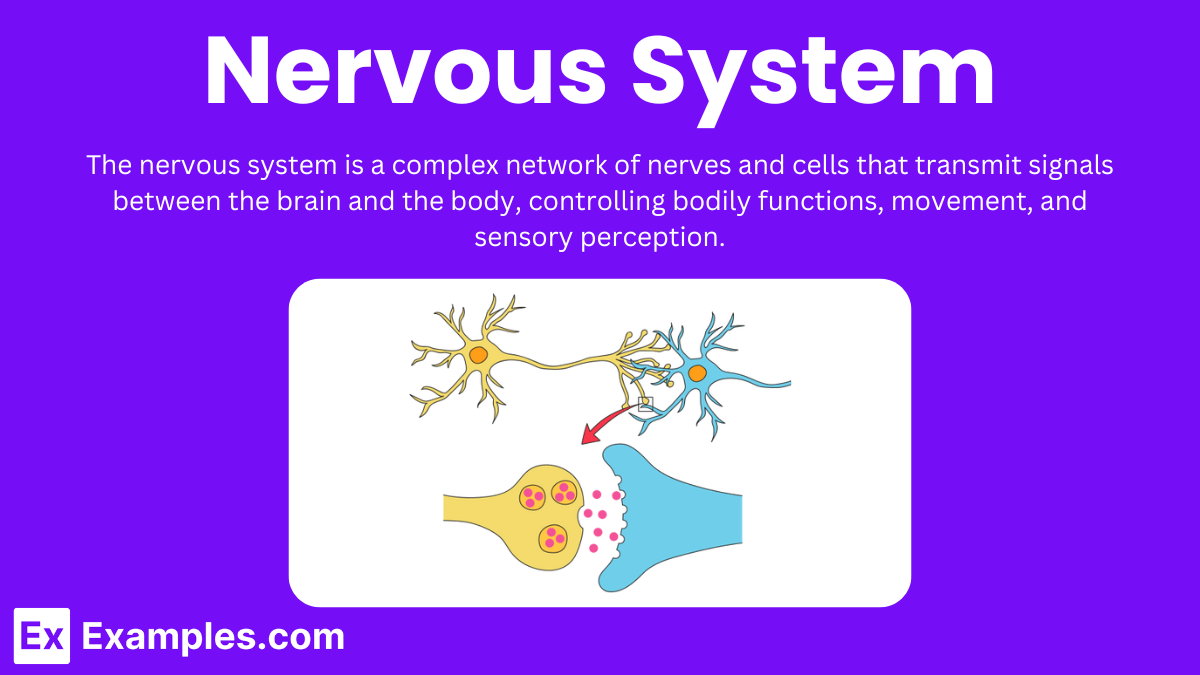
The nervous system is a complex network of neurons and supporting cells that transmit signals throughout the body. It is responsible for controlling and coordinating all voluntary and involuntary actions, processing sensory information, and maintaining homeostasis. The nervous system is divided into two main parts: the central nervous system (CNS) and the peripheral nervous system (PNS).
Central Nervous System (CNS): The CNS consists of the brain and spinal cord. It processes and integrates information from the body and coordinates activity.
Brain: The brain is the control center of the body, responsible for higher-order functions such as thought, emotion, memory, and voluntary movement. Key parts include:
Cerebrum: The largest part of the brain, controlling higher brain functions like reasoning and voluntary movement.
Cerebellum: Regulates balance, coordination, and fine motor control.
Brainstem: Connects the brain to the spinal cord and controls basic life functions such as breathing and heartbeat.
Spinal Cord: Transmits information between the brain and the rest of the body and coordinates reflexes.
Peripheral Nervous System (PNS): The PNS connects the CNS to the rest of the body and is divided into two main parts: the somatic nervous system and the autonomic nervous system.
Somatic Nervous System: Controls voluntary movements and transmits sensory information to the CNS.
Motor Neurons: Carry signals from the CNS to muscles.
Sensory Neurons: Carry signals from sensory receptors to the CNS.
Autonomic Nervous System (ANS): Regulates involuntary bodily functions such as heart rate, digestion, and respiration. It has two main subdivisions:
Sympathetic Nervous System: Prepares the body for "fight or flight" responses.
Parasympathetic Nervous System: Promotes "rest and digest" activities.
Neurons
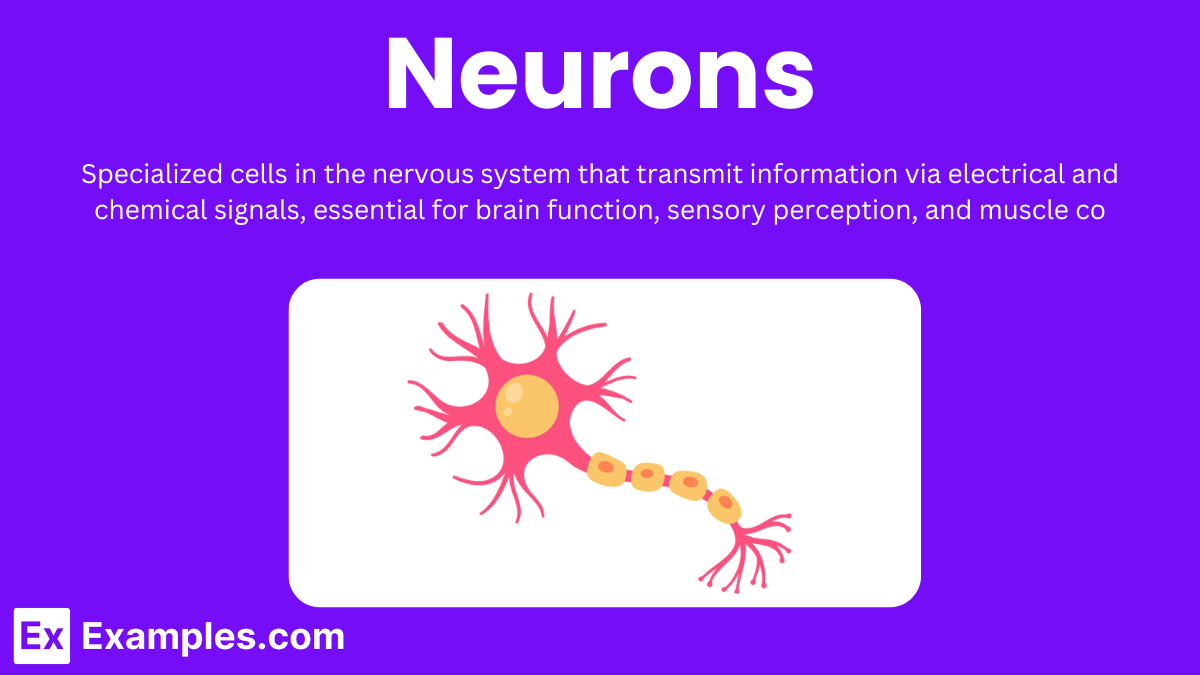
The nervous system relies on specialized cells called neurons to transmit information throughout the body. Neurons are the fundamental units of the brain and nervous system, responsible for receiving sensory input, sending motor commands, and processing and relaying information.
Structure of a Neuron
Cell Body (Soma): Contains the nucleus and organelles. It is the metabolic center of the neuron and is responsible for maintaining cell health and function.
Dendrites: Branch-like extensions from the cell body that receive signals from other neurons. They conduct electrical messages toward the cell body.
Axon: A long, slender projection that transmits electrical impulses (action potentials) away from the cell body to other neurons, muscles, or glands.
Myelin Sheath: A fatty layer that wraps around the axon, providing insulation and speeding up the transmission of electrical signals. The myelin sheath is produced by glial cells (Schwann cells in the PNS and oligodendrocytes in the CNS).
Nodes of Ranvier: Gaps in the myelin sheath where the axon membrane is exposed. These gaps facilitate the rapid conduction of nerve impulses.
Axon Terminals (Synaptic Boutons): The endpoints of the axon, where the neuron communicates with other cells. They release neurotransmitters into the synapse (the junction between neurons).
Types of Neurons
Sensory Neurons (Afferent Neurons): Carry signals from sensory receptors (e.g., in the skin, eyes, ears) toward the CNS. They help the body respond to external stimuli.
Motor Neurons (Efferent Neurons): Transmit signals from the CNS to muscles and glands, initiating movement or activating physiological responses.
Interneurons: Found exclusively in the CNS, they connect sensory and motor neurons and play a critical role in reflexes, neural circuits, and the processing and interpretation of information.
Neurotransmitters
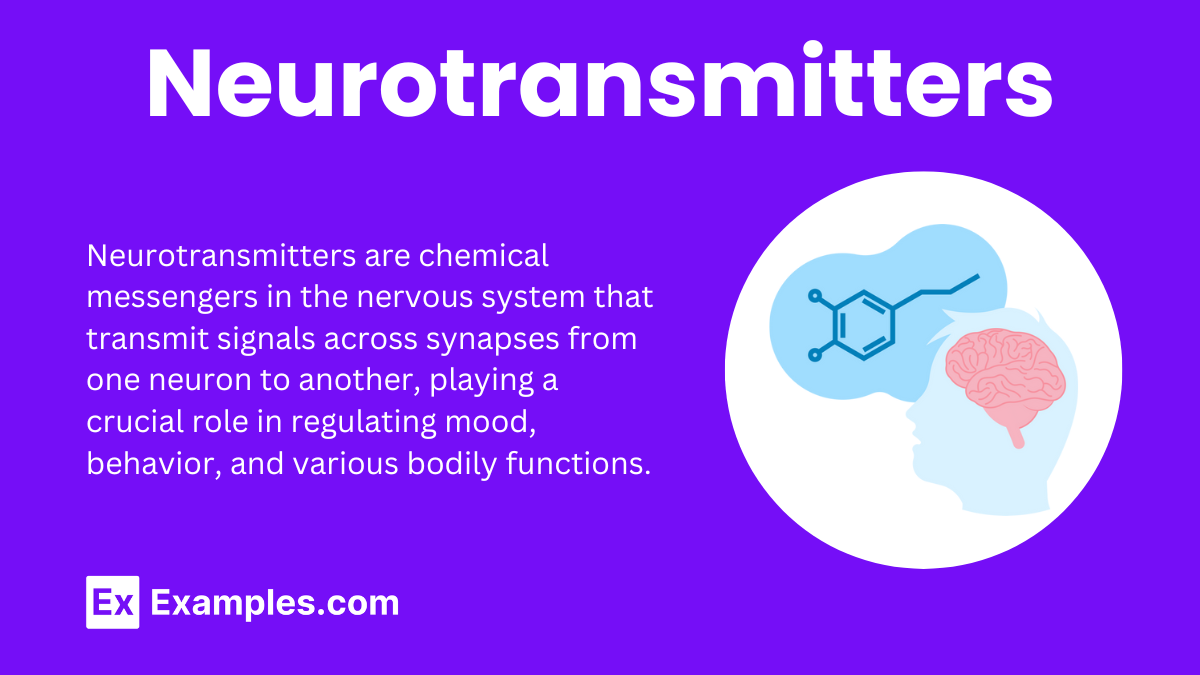
Neurotransmitters are chemical messengers that transmit signals across synapses from one neuron to another or to muscle or gland cells. They play a crucial role in the functioning of the nervous system, influencing various physical and psychological processes.
Types of Neurotransmitters
1. Acetylcholine (ACh)
Functions:
Muscle Action: Facilitates muscle contractions.
Learning and Memory: Involved in cognitive functions.
Disorders:
Alzheimer's Disease: Associated with a decrease in acetylcholine-producing neurons.
2. Dopamine
Functions:
Movement: Regulates motor control.
Reward and Pleasure: Involved in the brain's reward system.
Attention and Learning: Affects focus and cognitive functions.
Disorders:
Parkinson's Disease: Caused by low levels of dopamine in the brain, leading to motor control issues.
Schizophrenia: Linked to high levels of dopamine.
3. Serotonin
Functions:
Mood Regulation: Influences mood and emotional state.
Sleep and Arousal: Regulates sleep cycles and arousal.
Appetite: Controls hunger and satiety.
Disorders:
Depression: Associated with low levels of serotonin.
Anxiety Disorders: Linked to imbalances in serotonin levels.
4. Norepinephrine
Functions:
Alertness and Arousal: Increases heart rate and blood pressure during stress.
Mood: Affects mood and anxiety levels.
Disorders:
Depression: Low levels of norepinephrine can contribute to depressive symptoms.
Anxiety: Imbalances can be linked to anxiety disorders.
5. GABA (Gamma-Aminobutyric Acid)
Functions:
Inhibition: Major inhibitory neurotransmitter that reduces neuronal excitability.
Anxiety Regulation: Helps to calm nervous activity.
Disorders:
Anxiety Disorders: Low levels of GABA are associated with increased anxiety.
Epilepsy: GABA dysfunction can contribute to seizure activity.
6. Glutamate
Functions:
Excitation: Major excitatory neurotransmitter involved in learning and memory.
Synaptic Plasticity: Plays a role in strengthening synaptic connections.
Disorders:
Neurotoxicity: Excess glutamate can lead to excitotoxicity, causing neuron damage.
Schizophrenia: Imbalances in glutamate function are linked to symptoms.
7. Endorphins
Functions:
Pain Relief: Act as natural painkillers.
Euphoria: Induce feelings of pleasure and well-being.
Disorders:
Chronic Pain: Low levels of endorphins can be associated with chronic pain conditions.
Addiction: Endorphin release is involved in the reward mechanisms of addictive behaviors.
Neurotransmitter Function and Mechanism
Neurotransmitters are chemical messengers that transmit signals across synapses from one neuron to another, or to muscle or gland cells. They play a crucial role in the functioning of the nervous system, influencing various physical and psychological processes.
Function of Neurotransmitters: Neurotransmitters regulate numerous bodily functions, including mood, memory, muscle movement, and the sleep-wake cycle. Each neurotransmitter has specific functions:
Acetylcholine (ACh): Involved in muscle action, learning, and memory. It is crucial for motor control and cognitive functions.
Dopamine: Influences movement, learning, attention, and emotion. It is associated with the brain’s reward system and motor control.
Serotonin: Affects mood, hunger, sleep, and arousal. Low levels are linked to depression and anxiety.
Norepinephrine: Helps control alertness and arousal. It is involved in the body’s "fight or flight" response.
GABA (Gamma-Aminobutyric Acid): A major inhibitory neurotransmitter that reduces neuronal excitability and regulates muscle tone.
Glutamate: A major excitatory neurotransmitter involved in memory and learning.
Endorphins: Act as natural painkillers and induce feelings of pleasure and well-being.
Mechanism of Neurotransmitter Action: Neurotransmitters are released from the axon terminals of neurons in response to an action potential. They cross the synaptic cleft and bind to specific receptors on the post-synaptic neuron, muscle, or gland cell.
Interaction Between Nervous and Endocrine Systems
The nervous and endocrine systems are two critical systems in the body that work together to maintain homeostasis and regulate various physiological processes. While the nervous system uses electrical signals for rapid communication, the endocrine system uses hormones for slower but longer-lasting effects.
Hypothalamus-Pituitary Axis: The hypothalamus links the nervous and endocrine systems by regulating the pituitary gland. It receives signals from the nervous system and responds by secreting releasing or inhibiting hormones that control the pituitary gland's hormone release.
Neuroendocrine Cells: These specialized cells receive neuronal input and release hormones into the blood in response, integrating signals from the nervous system and secreting hormones to regulate physiological processes.
Feedback Loops: The nervous and endocrine systems maintain homeostasis through feedback mechanisms:
Stress Response: The interaction between the nervous and endocrine systems is crucial in the body's response to stress, involving the hypothalamic-pituitary-adrenal (HPA) axis.

